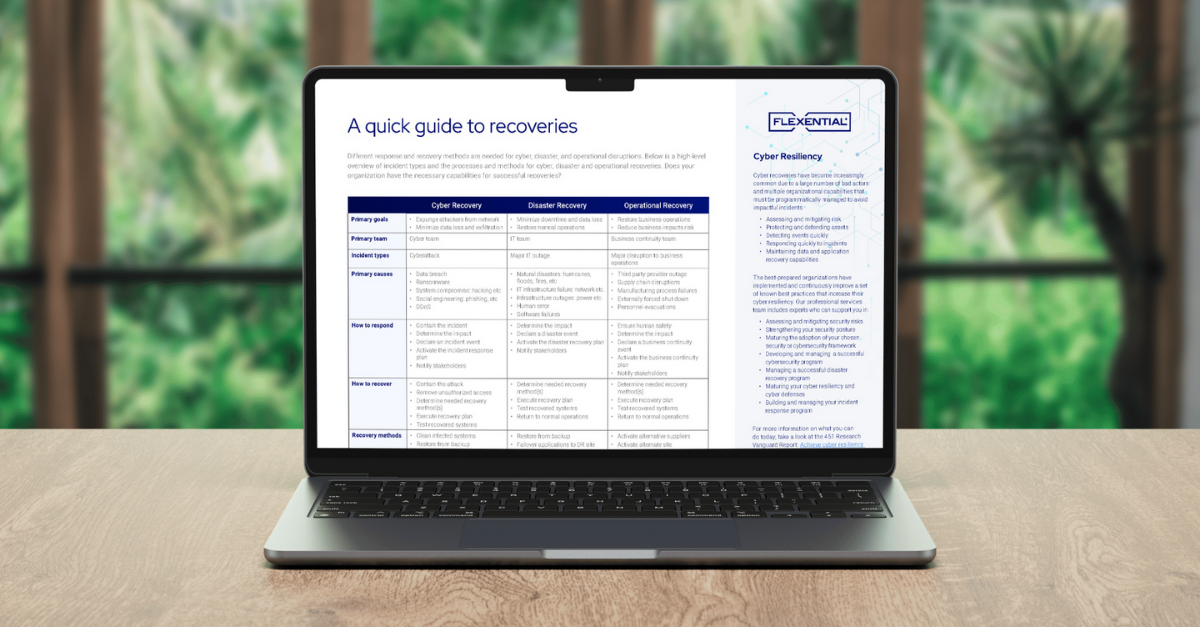Understanding your risk landscape
Assets, threats, and vulnerabilities
In cybersecurity, the question of what keeps us up at night remains more relevant than ever. Security concerns have taken center stage, underscoring a universal challenge: the relentless pursuit of safeguarding our digital assets.

Companies are still struggling to keep up with security controls and reduce risk. Most still don’t know how much a breach would cost them, how much data they have, how secure their managed service provider is, or the amount of budget they have (or typically don’t have) to secure data.
The answer to understanding and assessing your risk which lies at the intersection of your assets, threats, and vulnerabilities.
Join us to transform your approach to data protection and get ahead of potential disasters while managing costs for our webinar, Mastering data protection: Insights for implementing the right data protection strategy for your workloads.
Know what you’re protecting
We can’t protect what we don’t know. The cornerstone of defense is knowledge. Identifying and cataloging your assets lays the groundwork for effective protection.
This exercise involves more than a mere inventory; it demands a comprehensive analysis, mapping out where your data resides and its encryption status. Understanding the specifics of what you’re safeguarding is crucial for implementing precise and effective security measures.
Uncovering hidden adversaries
With your assets clearly defined, the next phase involves unmasking the threats. Do you have old firewalls? Which applications that you use are exposed to the internet? What other tools can we use to protect ourselves?
Assess the age and reliability of your firewalls, the exposure of your applications to the internet, and other potential vulnerabilities. This step is not about fearmongering but preparing—identifying tools and strategies that can fortify your defenses against these threats.
Know your weaknesses
Awareness of your weaknesses is as critical as knowing your strengths. Actively seek out and mitigate known vulnerabilities, all the while staying vigilant for the unforeseen—be it a zero-day exploit or an update from a vendor patching a newly discovered flaw. This proactive stance is essential for maintaining a posture of readiness against potential security breaches.
Yes, unplanned vulnerabilities will still come, but it’s important to take the time to assess existing vulnerabilities.
Assessing what level of risk is tolerable
One of the most complex aspects of cybersecurity is determining an acceptable level of risk. Absolute security is a myth; a degree of risk will always linger. This reality often presents a conundrum for organizations striving to articulate their risk tolerance to leadership, especially when budget constraints are part of the equation. The decision on how much to invest in risk reduction is a strategic one, deeply entwined with the business’s overall vision and goals.
Most companies struggle to communicate their level of risk, whether through a qualitative or quantitative calculation. Or sometimes the budget isn’t there. There are hard decisions that need to be made when trying to minimize risk.
What keeps you up at night?
As we continue to navigate the intricate world of cybersecurity, the question of what keeps us up at night serves as a stark reminder of the ongoing battle between security and vulnerability.
Check out our blog for strategies for defining your risk profile, exploring essential security controls, and highlighting best practices for a more secure digital environment.






